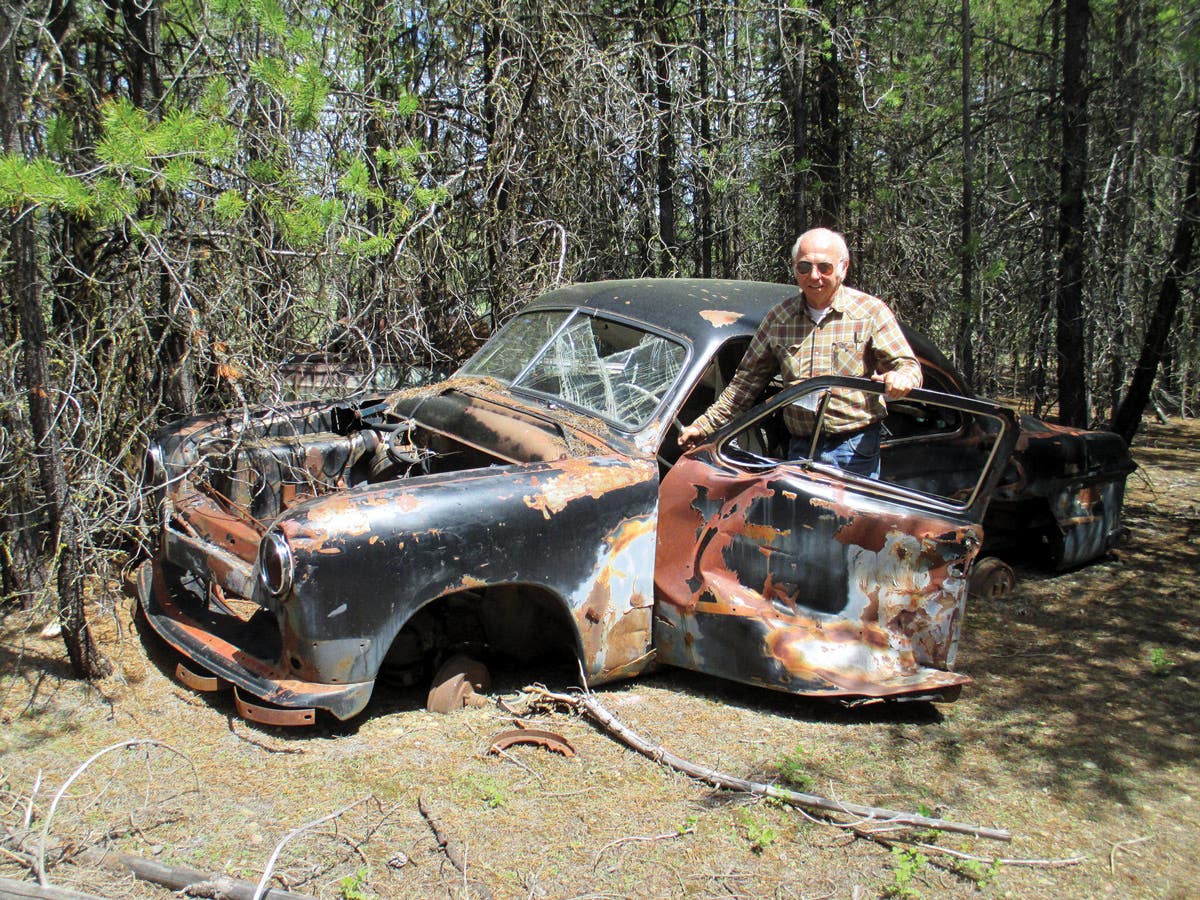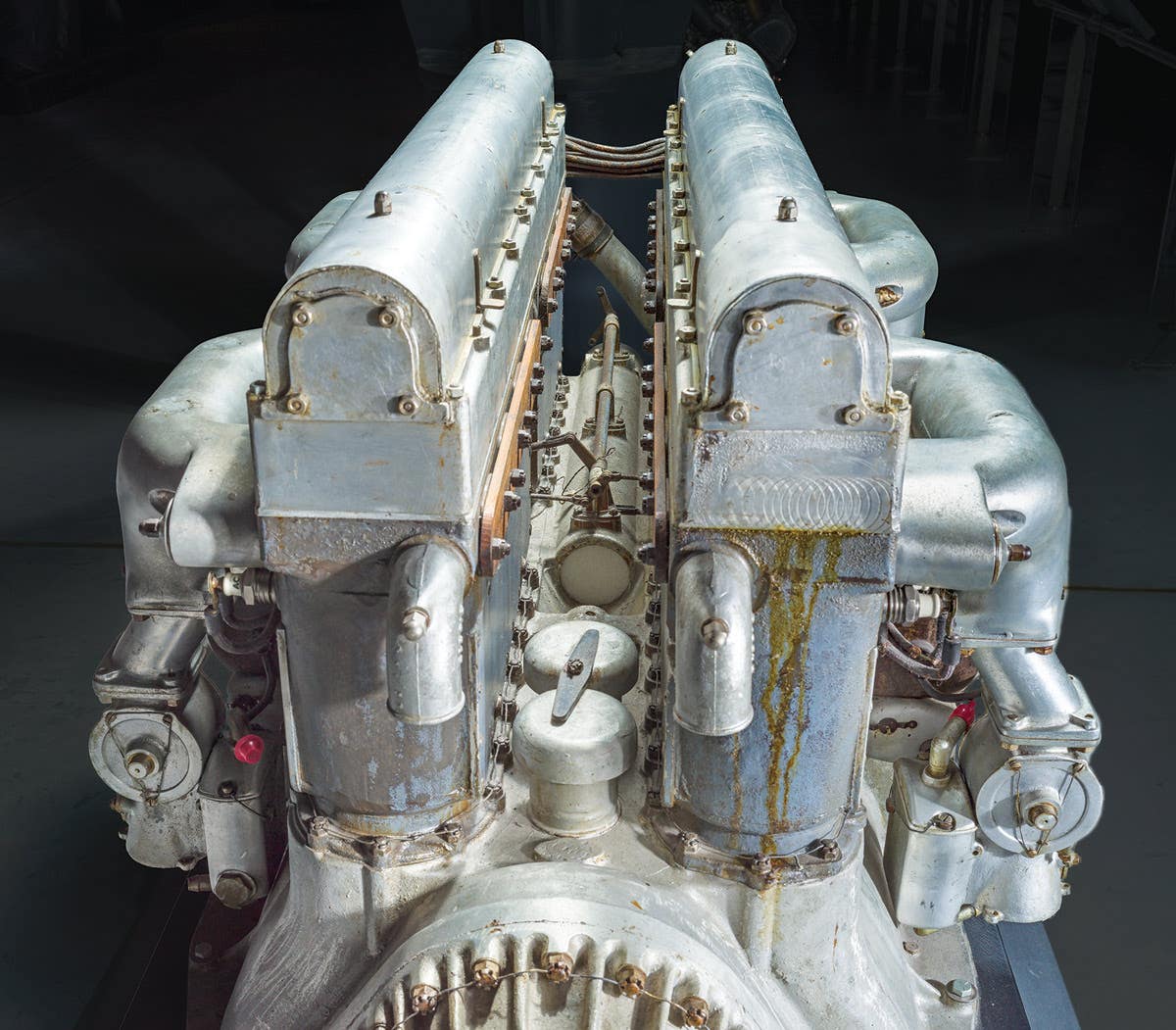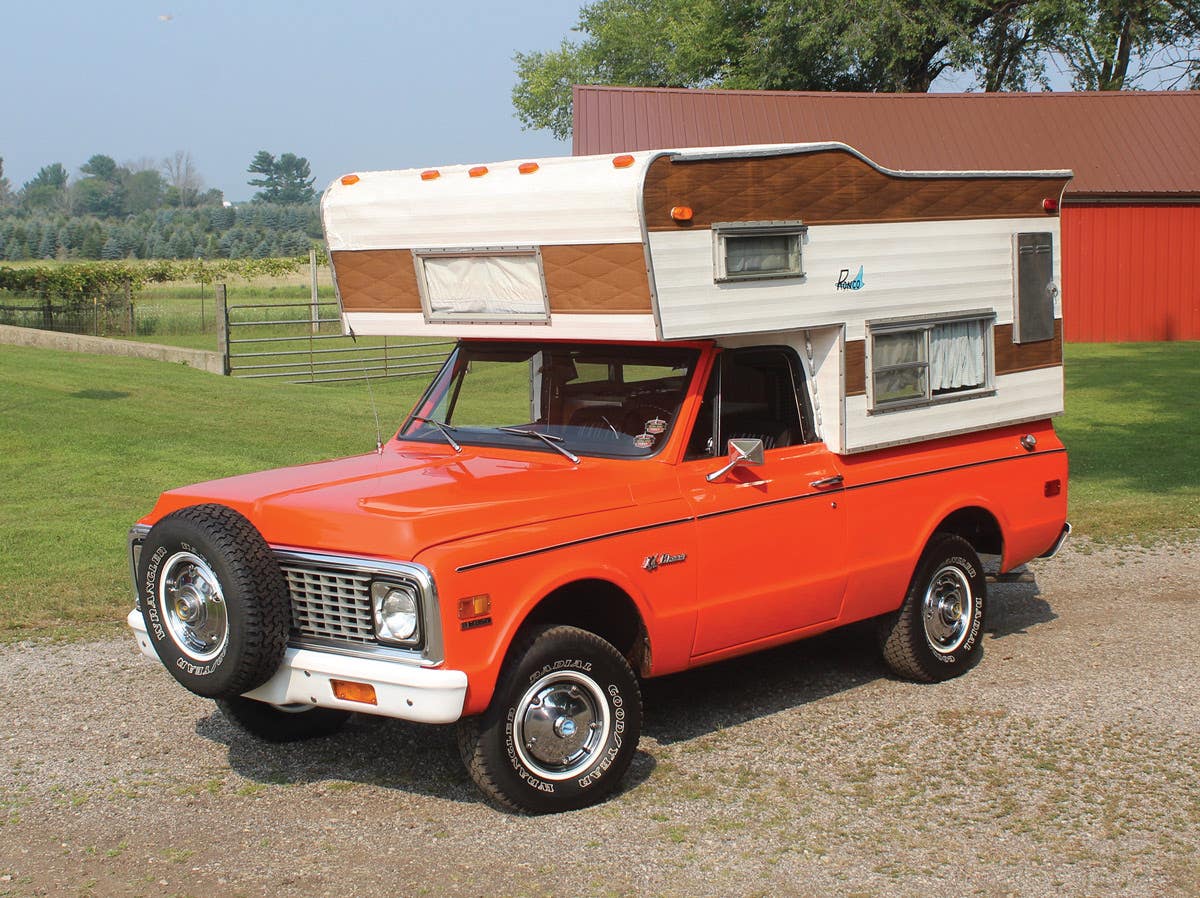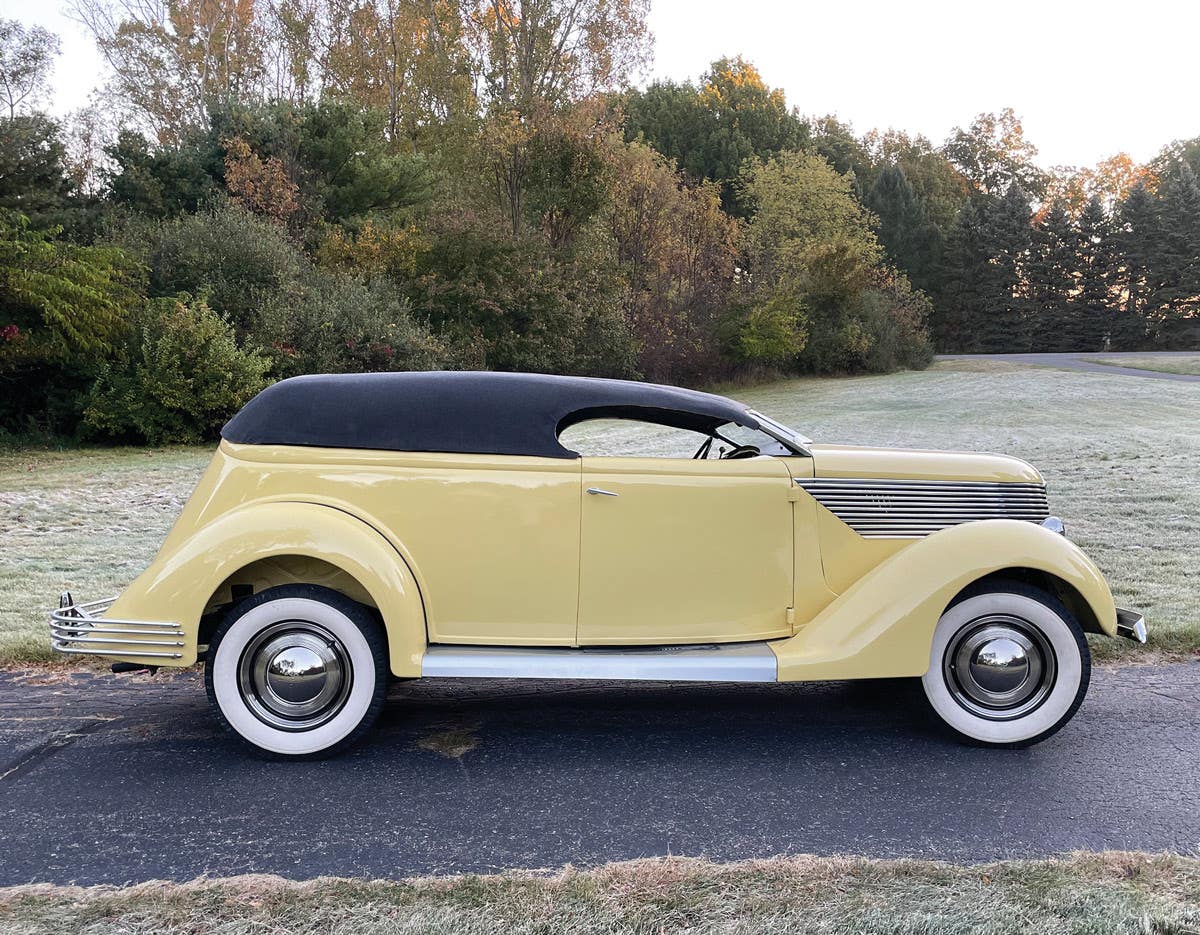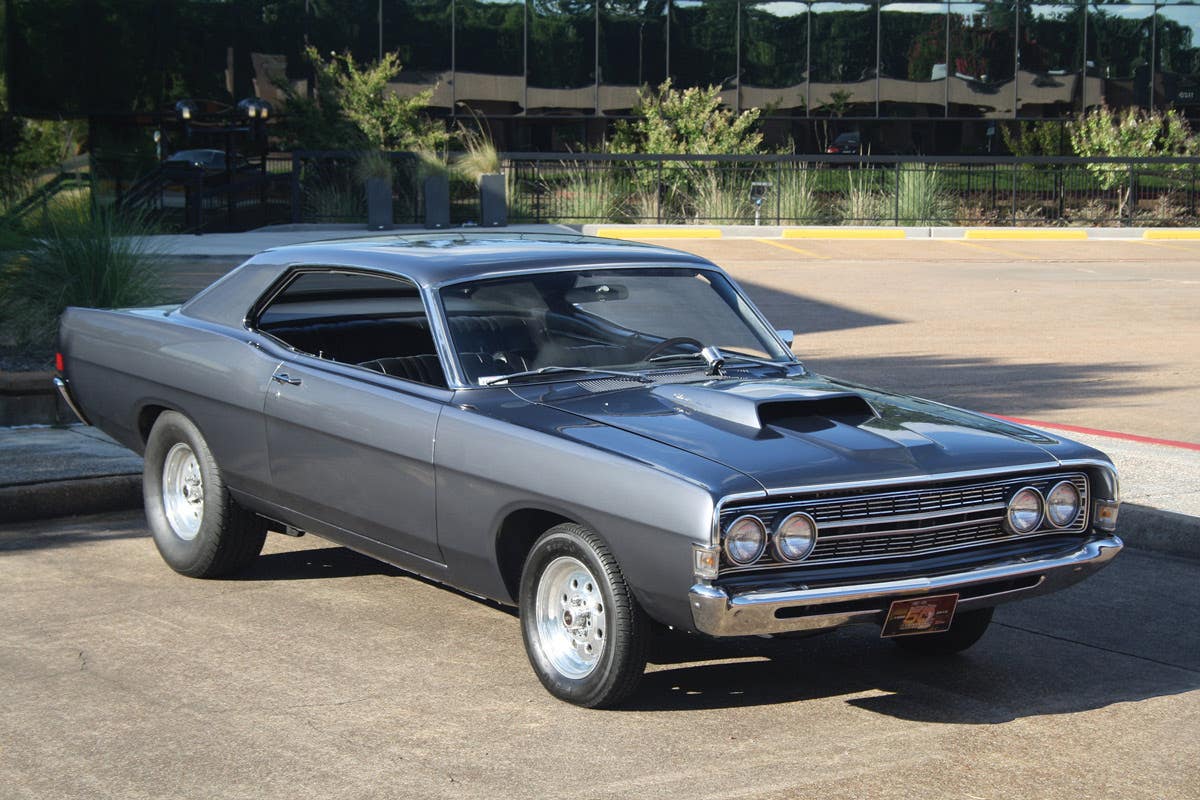This Petty Blue 1964 Plymouth Belvedere is an exact replica of the car that Petty Enterprises built and ran in the 1964 Winston Cup season. The build of this period-correct racecar was done at Petty’s Garage in Level Cross, N.C., and orchestrated by NASCAR Hall of Fame members Richard Petty, Maurice Petty and Dale Inman.
Petty Enterprises was a NASCAR racing team based in Level Cross, N.C., founded by Lee Petty and his sons, Richard and Maurice, as Lee Petty Engineering.
In 2008, the Petty family re-branded Petty Enterprises to Petty’s Garage with the purpose of serving car enthusiasts around the world. The mission stayed the same: to deliver the same attention to detail, care and expert capabilities that led Lee, sons Richard and Maurice, and their cousin, Dale Inman, into the NASCAR Hall of Fame.
It was under Petty’s Garage that Richard, Maurice and Dale joined forces to replicate an exact, certified copy of the #43 Plymouth that won the Grand National Championship in 1964. Each of the three had a significant role in the original’s development, offering their knowledge and expertise while overseeing its creation. Under their direction, a precise plan using a donor car and authentic Petty Enterprises 426 Hemi race engine was implemented that integrated each of their skill sets into the overall build of this iconic race car. Before the Petty’s Garage Team deemed the car was race-ready, each of the legends thoroughly examined the team effort to make sure it was up to their standards. Once each of them gave their approval, it was backed up by individual signature endorsements of authenticity with autographs on the silver air cleaner of the 426 Hemi.
to be the engine marked #11 by Petty Enterprises back in 1964. Note the signatures on the air cleaner. Freeze Frame Image LLC
To gather such men of stature on such a project is rare, but of those few projects they’ve undertaken, this car build didn’t start out in the conventional way.
A legendary engine discovery
Back in the day, when Petty Enterprises received factory-built 426 Hemi racing engines from Chrysler Corp., they were sent directly to engine builder Maurice Petty, who would methodically go through each engine in his secluded engine room to find out which of them met his stringent requirements. This process included running each of them on the dynamometer. The engine room still exists, scattered with leftover parts from years of racing and layers of paint coating its nearly 75-year-old concrete floor. The process was done in complete secrecy, behind a black curtain, to keep things private and so Maurice wasn’t disturbed during this critical engine selection process. He insisted on putting each Hemi engine on the dyno to find the strongest and best of the batch. Some of the engines that didn’t make the cut were shelved or sold off. One of these engines is believed to be the powerplant that’s found its way under the hood of this ’64 Plymouth race car recreation.
Marked with a number 11 and the letters “PE” cast into the engine block, this 426 Hemi race engine sat dormant at Petty’s Garage until 1965. It was allegedly sold to a man in Nashville, Ga., and then was traded through several people before finally winding up with a man who planned to put it in a stock car, but never got around to it. The owner stowed it under a work bench in a wooden crate within one of his outbuildings. It remained there, surrounded by MoPar parts and automobiles, for decades.
After receiving a lead, Boris Bonutti and an associate visited a seller of MoPar parts and automobiles in 2008 in hopes of buying some of his rare MoPar parts. During the walk-through, Bonutti’s associate lifted a military green canvas that covered what appeared to be a Hemi engine equipped with a dual four-barrel carburetor intake manifold. When asked, the owner wasn’t certain of the engine’s origins, then scolded him for peeking under the blanket. He told him, “Hands off!” and made it clear the Hemi wasn’t for sale. Boris and his associate left that day thinking they’d missed an opportunity to buy a Hemi.
incorporates what Petty said were its best features over that period of evolution. Freeze Frame Image LLC
The following day, the engine’s owner surprised Bonutti with a phone call and said he would sell the Hemi engine. The owner needed money to pay for the medical care of a family member. Payment was immediately sent to the seller, then arrangements were made for the 426 Hemi engine to be picked up and delivered to Effingham, Ill.
Once the engine was in their hands, Bonutti and his associate looked it over. The number “11” and initials “PE” immediately piqued their interest. Not knowing what they had before them, they reached out to “Mr. Four-Speed” Herb McCandless, a former Sox and Martin drag race team driver and one of the first drag racers to use the 426 Hemi. That’s when things started to get interesting.
Without the help from Herb McCandless, it’s likely the project would not have happened.
“There’s no doubt in my mind that, without the advice and help from Herb McCandless, this project could not have happened,” Bonutti said. “He gave us directions and opened doors that we could not have done on our own.”
After seeing detailed pictures of the engine, McCandless immediately suggested calling Greg Steadman, the general manager of Petty’s Garage. After sending Steadman the photos, the phone rang and it was Richard Petty on the other end. He reached out personally and called, asking if he could buy the engine. Despite having the wrong intake and carburetors, it was, in fact, an authentic 426 Hemi track engine that left Petty Enterprises in 1965; the “PE” stamp had, indeed, stood for Petty Enterprises, and Petty hoped to reacquire it.
The King was politely informed that the Hemi engine wasn’t for sale and so he asked, “What’s your plan for it?” During the phone conversation, Richard Petty said Petty’s Garage had recently decided to start building hot rods, customs and race cars at its shop. “We’re looking for our first major project,” Petty told Bonutti. He suggested that, if Bonutti and his associate found a nice donor car, he’d build them a race car. That’s when the light bulb came on.
Sourcing a shell
“We needed to build a car to bring this engine back to life, but not any race car, it had to be an exact recreation of the one that started it all for Richard Petty,” Bonutti said. Collectively, they decided to recreate the Petty Blue 1964 Plymouth Belvedere.
Another friend, Wayne Cox — aka Spanky — had just picked up a ’64 Plymouth Belvedere as a rolling chassis. It had a straight body, but no interior or drivetrain.
After telling Spanky about the plan, Bonutti was offered his choice of two Plymouth Belvederes: a red one and a blue one. Bonutti talked Spanky into selling them both of the cars.
Greg Steadman and the team at Petty’s Garage were called and given the news about the availability of the pair of ’64 Plymouth Belvederes. After looking at detailed pictures of both cars and discussing it with Richard Petty, they requested that the red Belvedere serve as the donor car for the build as it had the best foundation.
Soon after reaching an agreement about using the red Plymouth Belvedere, it headed south to Petty’s Garage in Level Cross for the start of the 1964 Petty Plymouth Belvedere race car build. The recreation of #43 was officially underway.
The pieces come together
The Petty No. 43 Belvedere is a combination of the cars that were used in the entire ’64 season. In its purest form, this car represents what was run in mid-to-late-’64. Bonutti ultimately deferred to the Pettys’ expertise in all decision-making, as Richard Petty and Dale Inman, former crew chief and cousin, performed the build.
“These were the original guys who built the car in 1964 — they knew best,” Bonutti says.
This recreation shares characteristics of several versions of Petty’s ‘64 Plymouth, only showcasing the best. For instance, Inman insisted on using painted steel wheels as opposed to the chrome reverse wheels used at the ’64 Daytona 500. Inman complained that the chrome rim’s beads sealed poorly and caused the tires to slip at high speeds. Petty ran chrome wheels during practice and qualifying, but later switched to the painted wheels shown on the tribute car. The painted wheels had more bite and didn’t wear out the tire as fast.
Richard and Dale’s signatures are seen here, on the dash and inner door. Freeze Frame Image LLC
The early ‘64 superspeedway Belvedere had full trim, but as the season progressed, the car began to lose its exterior trim. By the end of the season, the platform transitioned into a clean, trim-free race car. The Petty’s Garage team decided to go with the cleanest and simplest look for this race car.
Bonutti is the owner of the featured 1964 Petty Blue #43 Plymouth Belvedere, and from day one, the driving force that truly motivated him to see this project to the end was the importance of keeping the history of Petty Enterprises and the special Hemi engine alive through this race car. But most important was the once-in-a-lifetime opportunity of having Richard Petty, Maurice Petty and Dale Inman — the original trio — involved in the recreation of their iconic #43 Plymouth Belvedere race car.
As the saying goes, there’s more to the story. Pulling off this monumental task required help from others.
“When word got out that the 1964 Petty Belvedere was being recreated, people wanted to get involved,” Bonutti said. “...As we started going about the hunt of locating real race cars parts for the build, we met another NASCAR legend named Cotton Owens.”
During the pre-planning and development of this race car, an associate stumbled across Cotton Owens’ #6 Dodge Polara. That car was built for the 1964 race season and was also one of the eight Hemi cars that ran at the ‘64 Daytona 500.
“After meeting with Cotton at several shows and stopping by his shop, Cotton and my associate became friends,” Bonutti said. “That’s when we were finally able to convince him to sell us some of his vintage race parts.
“Cotton Owens was a great guy,” Bonutti continued. “Petty’s Garage used many of the dimensions from Cotton’s race car for the #43 Petty race car. Cotton sold us the accurate carburetor and intake manifold to replace the dual-carb drag racing intake manifold that was on the engine when we bought it. Cotton also sold us the correct bellhousing and shifter. Once again, without help from a legend within the MoPar and NASCAR community, this build could not have been successful.”
While working with Owens to acquire parts for the Petty #43 Petty racecar build, Cotton made a request: “I’ll help you with the parts you need for this project, but I’d like you to help me build a race car. I want to build an exact recreation of the 1966 Dodge Charger #6 race car that David Pearson and I won the NASCAR championship with in 1966.”
Promises made, and promises kept. That #6 Charger was, indeed, built, and was featured in the Oct. 29, 2015, issue of Old Cars.
A comfortable future for the ’64 #43
After spending several years at the NASCAR Hall of Fame in Charlotte, N.C., the #43 ’64 Petty Belvedere returned to Petty’s Garage in 2023 for a thorough inspection, engine tune up and a little TLC to make it turnkey ready for its next adventure. It was picked up at Petty’s Garage, then transported to Auburn, Ind., where it’s been displayed at the National Automobile and Truck Museum (NATMUS) as part of the “Legends of NASCAR” display. There, it has received very favorable response.
“It’s a real attention getter for all generations,” says Dave Yarde, executive director at NATMUS.
A Brief History of the #43
1964 Petty Blue Plymouth Belvedere
In 1962, Chrysler set a goal: Dominate the ’64 Daytona 500. Despite the excitement surrounding Chevrolet’s 427-cid Mystery Motor, Ford won the ’63 Daytona, and its showroom sales skyrocketed. Back in those days, winning the Daytona 500 was a major factor in new-car sales for the “Big Three.” While Chrysler Corp. wanted one of its cars in the winner’s circle, so, too, did the Pettys. Lee Petty had been with Chrysler since his first Daytona win in 1959. As preparation for the 1964 season began, young Richard Petty knew he would be running a new engine, but he couldn’t know he would be introducing a powerplant that the hot rod world still talks about more than 60 years later. In February 1964, NASCAR discovered a King while MoPar created a legend in the 426 Hemi.
In 1964, the MoPar world and motorsports changed forever. That year marked the introduction of the 426 Hemi engine. It is a powerhouse that set a new standard, and it continues to be a highly relevant tool to create horsepower to this very day. The Hemi engine was a mechanical marvel and game changer that was so successful, it was banned from NASCAR after its first year. Today, it continues to be the basis of the engine that is used by all teams in the NHRA Nitro Top Fuel and Funny Car classes.
The story of Chrysler’s Hemi engine starts with the introduction of the hemispherical-shaped combustion chambers in its 1951 models. The size of those early Hemi engines ranged between 301 cubic inches in the beginning of the 1950s and 392 cubic inches by decade’s end. However, while these engines were very power-efficient, they were expensive to produce. Changes in passenger car engine technology also caused Chrysler to cease production of the first-generation Hemi in 1958.
By 1963, the 426-cid Wedge engine that had been used by Chrysler Corp. in NASCAR was deemed to have hit its horsepower limit. Therefore, the engineering team at Chrysler Corp. looked to explore a different direction for its racing engine, all with the purpose of winning the Daytona 500 in 1964.
Chrysler engineer Tom Hoover and his factory crew worked with a number of teams and drivers — including Petty Enterprises — to perfect the new Hemi engine in time for the ’64 Daytona 500. The efforts by those engineers and the work by the teams all paid off. Richard Petty, in his iconic #43 Petty Racing Plymouth, led a 1-2-3-5 Chrysler Hemi finish for the race. Petty took the lead in the second lap of the race and never looked back — he ended up leading 184 of the 200 laps of the 1964 Daytona 500, a record that still stands.
Following that season, NASCAR imposed rules mandating that all engines competing in the series had to have production availability. Chrysler Corp. spent the remainder of 1964 and all of 1965 working through this challenge to bring their innovation to the people as the code A102 Street Hemi engine. (In the meantime, it continued to build 426-cid Race Hemi engines for drag racers.) As a result, the 426 Hemi engine returned to NASCAR for 1966 when the A102 Street Hemi became available in street cars.
With the Hemi’s return, Richard Petty and Petty Enterprises reminded everyone that the Hemi 426 V-8 was the engine to beat, winning the 1966 Daytona 500 with his Plymouth Belvedere. David Pearson won the 1966 NASCAR championship title for Dodge in the Cotton Owens-prepared, Hemi-powered #6 Dodge Charger.
The success of the Hemi engine continued until the mid 1970s, when displacement rules forever banned big-block engines, such as the Hemi. But while the Hemi engine was originally designed to compete in NASCAR, the world of drag racing has seen the value in the 426 Hemi engine ever since its introduction. Beyond Super Stock classes that used it from the beginning during 1964, professional drag racers have continued to explore its potential, eventually introducing nitromethane to fuel them. The more they realized this was the perfect engine for unlocking unheard-of performance in the world of internal-combustion engines, the more popular it became.
Boris Bonutti’s Perspective
Engine builder Timmy Petty, the son of Maurice Petty, worked on the 1964 Hemi engine with his father in their original Petty engine room. Timmy Petty told me, “It was one of the most magical moments in my life when I opened the case of the #11 Hemi engine with my father, an engine my dad last touched in 1964. Sons rarely have living memories like that with their father.”
When I first acquired the engine, I was at a loss of what to do with it. I thought, “Even if we get someone at Petty’s to authenticate and rebuild the engine, what fun is it to have it sitting on a motor stand for show and tell?” That’s when we came up with the idea of recreating the 1964 Petty Belvedere. The engine needs to be in a Petty race car, not displayed on an engine stand. That’s when we made the connection with Herb McCandless, who told us about the new venture at Petty’s Garage and gave us Greg Steadman’s contact.
Greg initially authenticated the engine as the #11 Hemi engine built by Petty Racing in 1964. This was followed by a call from the King himself, asking if he could purchase the Hemi engine, which I politely declined. I proposed an accurate recreation of the 1964 Petty Plymouth Belvedere. Richard immediately grasped the value of the project and agreed. He was wondering why someone would be crazy enough to build a race car project like this, and I stated the goal was to preserve history. He confided in me and talked about how important this car was to him, because it started his long record of NASCAR success. The ‘64 Belvedere became one of two private racecar projects taken on by Petty’s Garage. It was joined at the shop with the Pete Hamilton Plymouth Superbird race car, which was being restored at the same time.
Love race cars? Here are a few more articles for your reading enjoyment.
If you like stories like these and other classic car features, check out Old Cars magazine. CLICK HERE to subscribe.
Want a taste of Old Cars magazine first? Sign up for our weekly e-newsletter and get a FREE complimentary digital issue download of our print magazine.




